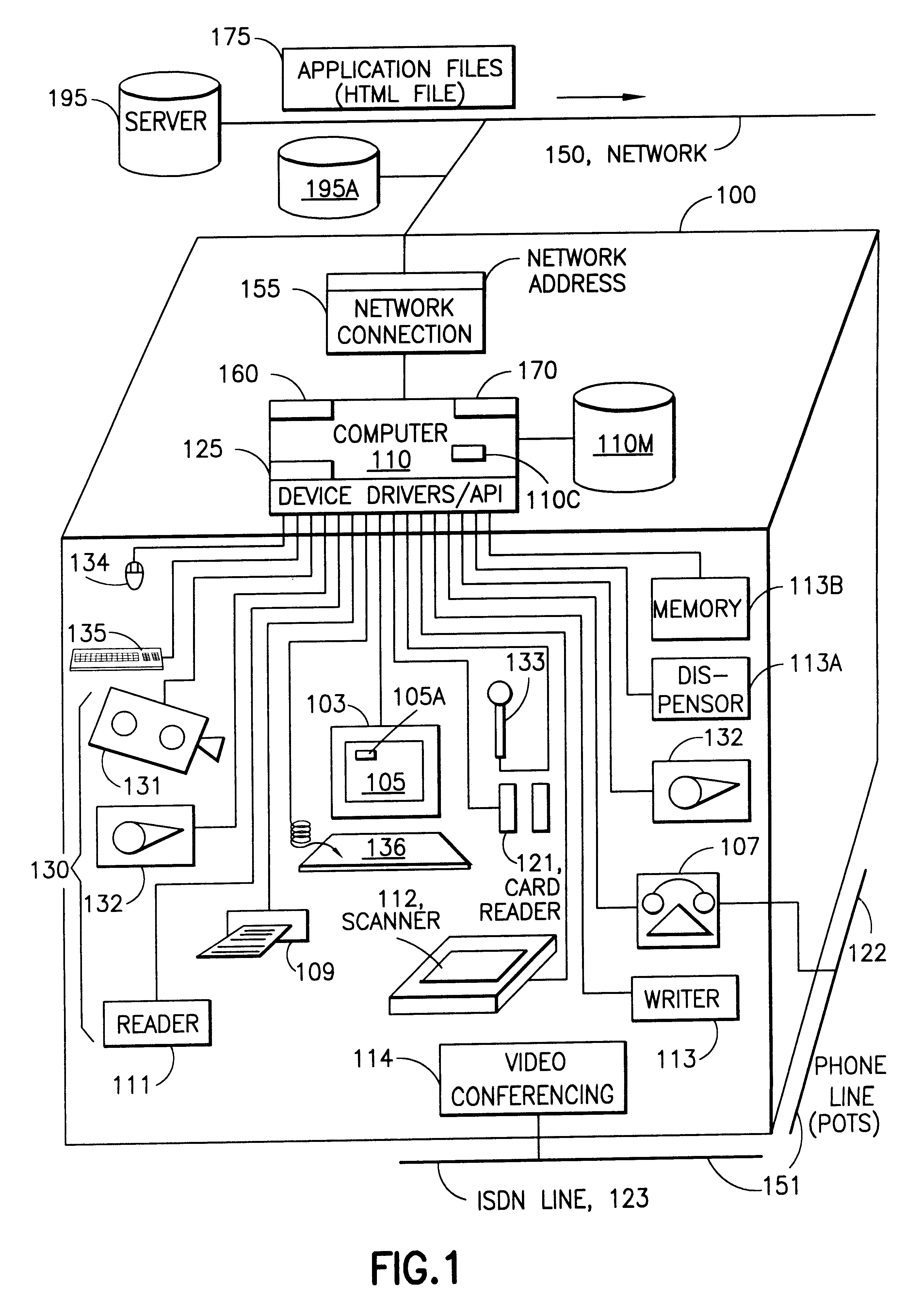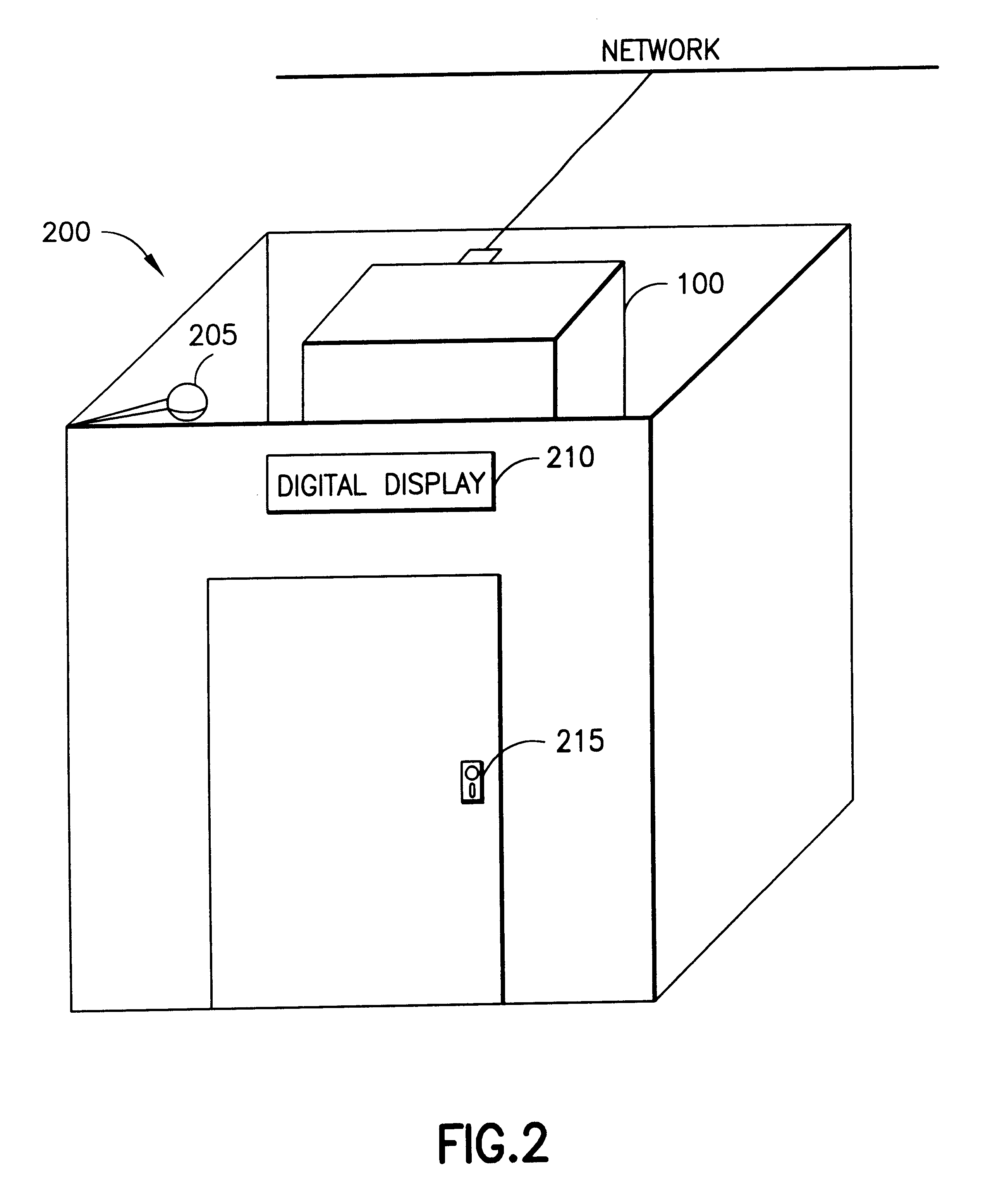Server for reconfiguring control of a subset of devices on one or more kiosks
a server and kiosk technology, applied in program control, instruments, digital transmission, etc., can solve the problems of inflexible kiosk design, no help customized to a specific user, inflexible prior art kiosks, etc., and achieve the effect of fast and reliable access
- Summary
- Abstract
- Description
- Claims
- Application Information
AI Technical Summary
Benefits of technology
Problems solved by technology
Method used
Image
Examples
example 2
uses a Java applet directly as the embedded kiosk control program 1030 with a plug-in module 1040A providing a message passing function.
The application file 175 with the control program 1030 is as follows:
The Java applet "MYAPPLET.Java" would contain code like:
Same as in Example 1, the plug-in module 1040A associated with the embedded control program 1030 above would provide the method SendMsg( ) which, for example, is implemented in native language code such as C++.
example 3
uses the embedded file 1030 containing a set of predefined control scripts and a corresponding plug-in module 1040A which interprets and executes the scripts to control of the kiosk local APIs 680.
The application file 175 with the embedded file 1030 could be as follows:
While the plug-in module 1040A may consist the following code:
All the three plug-in functions shown above implement the standard plug-in APIs which are provided by the Netscape browser 160. Other plug-in APIs provided by the browser 160 are not used here.
When the tag is interpreted by the HTML interpreter 610, the file 1030, MSGPASS.MET, is downloaded to the local disk and the corresponding plug-in module 1040A is loaded, if it has not been loaded before yet, into the browser 160. The browser 160 will automatically call the plug-in API NPP_New( ) to create an plug-in instance and call plug-in API NPPStreamAsFile( ) with the name of the downloaded file to execute the file. When necessary, the browser 160 will call the...
PUM
 Login to View More
Login to View More Abstract
Description
Claims
Application Information
 Login to View More
Login to View More - R&D
- Intellectual Property
- Life Sciences
- Materials
- Tech Scout
- Unparalleled Data Quality
- Higher Quality Content
- 60% Fewer Hallucinations
Browse by: Latest US Patents, China's latest patents, Technical Efficacy Thesaurus, Application Domain, Technology Topic, Popular Technical Reports.
© 2025 PatSnap. All rights reserved.Legal|Privacy policy|Modern Slavery Act Transparency Statement|Sitemap|About US| Contact US: help@patsnap.com



